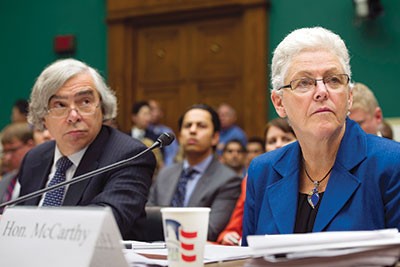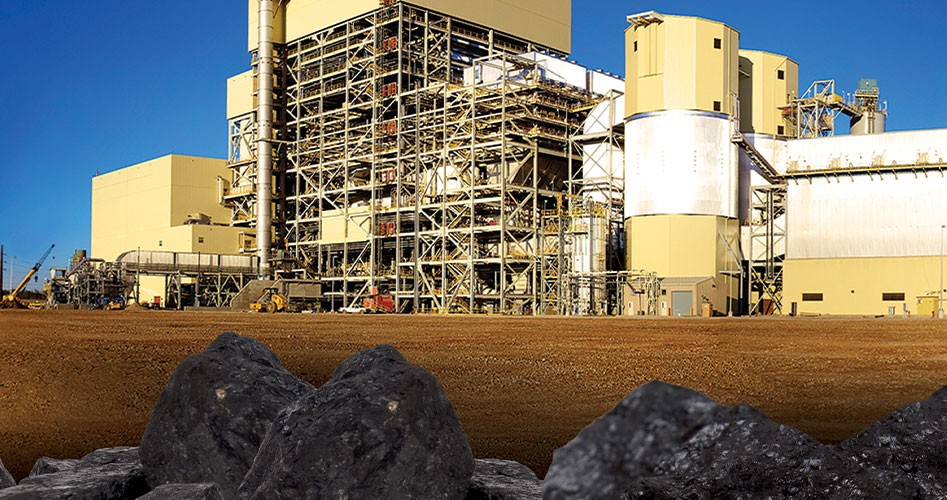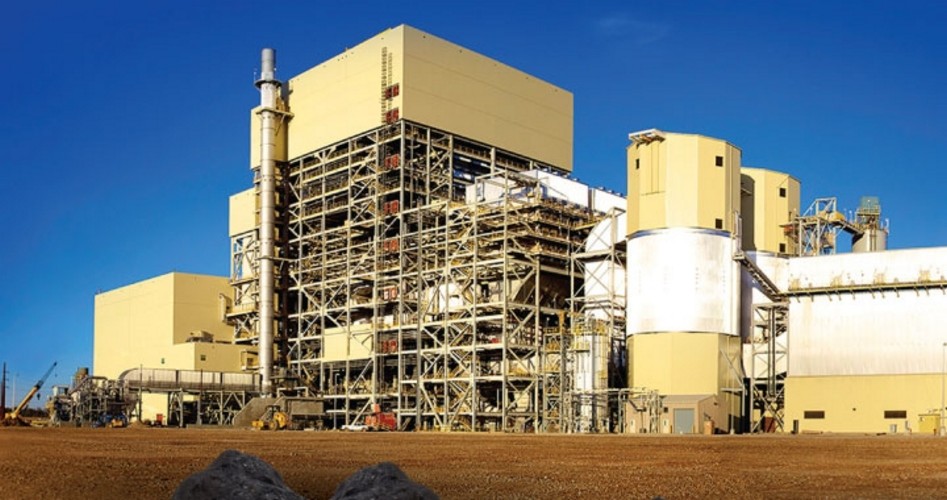EPA v. USA
As part of President Obama’s Climate Action Plan unveiled in June, his Environmental Protection Agency (EPA) is mandating exorbitant and punitive limits on power plant carbon emissions. The EPA unveiled its proposal in September to restrict new power plants to technologically impossible standards of carbon dioxide generation and capture.
The announcement has brought down a storm of criticism from industry and public officials. “Never before has the federal government forced an industry to do something that is technologically impossible,” countered U.S. Senator Joe Manchin (D-W.Va.), who serves on the Senate Energy and Natural Resources Committee. He warned, “If these regulations go into effect, American jobs will be lost, electricity prices will soar, and economic uncertainty will grow.”
“The Obama Administration must think our country … can operate on windmills,” quipped U.S. Senator Lamar Alexander (R-Tenn.), calling the new regulations “one more big, wet blanket on the American economy.”
The new rules would require future coal-fired plants to release no more than 1,100 pounds of carbon dioxide per megawatt-hour, down from almost 1,800 pounds of CO2 per megawatt-hour for the average conventional facility. They would also mandate that new plants capture their emissions, a feat requiring technology still in its infancy.
Indiana Manufacturers Association President and CEO Patrick J. Kiely said the new regulations “will create a man-made energy crisis” that could shut down manufacturing, while National Association of Manufacturers (NAM) President and CEO Jay Timmons dubbed Obama’s Climate Action Plan a “misguided vision” and called on Congress “to set firm limitations on how the agency uses the Clean Air Act to regulate greenhouse gases.”
Unwilling to await congressional action, NAM has joined forces with other industry groups such as the American Petroleum Institute to challenge the EPA’s so-called greenhouse gas (GHG) regulations. Though the U.S. Supreme Court agreed to hear the case, its October 15 order stipulates the review will be limited to whether the EPA is permitted to regulate GHG emissions for stationary sources — as opposed to motor vehicles — under the Clean Air Act.
The court refused other petitions to challenge its own 2007 decision that the EPA has a “statutory obligation” to regulate GHGs or to dispute whether GHGs should be classified as pollutants. These refusals have prompted environmental groups, such as the Sierra Club and the Environmental Defense Fund, to declare early victory, while Consumer Energy Alliance (CEA) Executive Vice President Michael Whatley told The New American, “There are still a number of regulations EPA is working on that target coal-fired electricity. We need to continue a grassroots campaign in the States to ensure a continued supply of affordable, reliable electricity into the future.”

The coal hard truth: U.S. Energy Secretary Ernest Moniz (left) and EPA Administrator Gina McCarthy both deny Obama’s climate plan targets coal, despite the president’s open admission of intent to bankrupt the coal industry. (Photo credit: AP Images)
Critics realize the EPA is taking its marching orders from a president with an avowed goal of bankrupting the coal industry. During his first presidential bid in 2008, candidate Obama told the San Francisco Chronicle, “If somebody wants to build a coal-fired power plant, they can. It’s just that it will bankrupt them because they are going to be charged a huge sum for all that greenhouse gas that’s being emitted.” He added, “Under my plan of a cap-and-trade system, electricity rates would necessarily skyrocket.”
True to his campaign promises and bypassing Congress’ 2010 rejection of cap-and-trade, Obama is foisting his wishes on the American people through bureaucratic maneuvering and executive decree, threatening an industry that provides more than 40 percent of our nation’s electric power needs and employs hundreds of thousands.
Incredibly, in its own Regulatory Impact Analysis,which denies significant costs and economic effects,the EPA finds its new standards “will result in negligible CO2 emission changes, energy impacts, [and] quantified benefits” but justifies the rules claiming they “help incentivize innovation that would lead to lower CO2 emissions in the future.” Harping on this theme and ignoring both industry feedback and Obama’s blatant admissions, EPA administrator Gina McCarthy denies targeting coal. “This proposal, rather than killing future coal, actually sets up a certain pathway forward for coal to be a part of the diverse mix in this country,” she claims.
Carbon Capture
This “certain pathway,” which would by bureaucratic condescension allow regulation-shackled coal-fired plants to peacefully coexist with their less efficient, unreliable, and highly subsidized counterparts such as wind and solar, involves as- yet commercially unfeasible technology called “carbon capture and sequestration” (CCS). McCarthy points for proof of the technology’s usability to Southern Company’s planned Plant Ratcliffe in Kemper County, Mississippi, subsidized with tax incentives and $245 million in Energy Department grants. But Ratcliffe proves a poor example, according to Southern Co. spokesman Tim Leljedal, who wrote, “Because the unique characteristics that make the project the right choice for Mississippi cannot be consistently replicated on a national level, the Kemper County Energy Facility should not serve as a primary basis for new emissions standards impacting all new coal-fired power plants.” He also criticized the revised standards because they “essentially eliminate coal as a future generation option.”
Ratcliffe sits on a healthy deposit of lignite, the low-cost coal it uses as fuel, and within close proximity to oil fields where the captured carbon can be injected to increase oil production. It would be difficult to replicate these conditions in other parts of the country. The American Public Power Association (APPA) confirms this in a detailed response to the EPA’s proposal. APPA explains the heavily subsidized CCS technology is not commercially viable and only works in Kemper County’s uniquely favorable setting. It points out the “EPA has failed to answer the very important questions of regulatory treatment and liability for CO2 once it has been captured by a plant.” APPA believes the proposed rules are “poor public policy” and “will cause energy prices to increase considerably.”
Burning coal produces CO2, and it is not a trivial problem to sequester the gas. A large coal-fired plant burns about 10,000 tons of coal per day, producing about 590 million cubic feet of CO2. To put this in perspective, you could fill 85 Hindenburg zeppelins, 800 feet long and 12 stories high (which held about 35 times the volume of gas of a Goodyear blimp), with one day’s CO2 output from a major coal-fired plant. Experts estimate it would take about 50 percent of a plant’s energy to capture and sequester its CO2 output.
Industry Alternatives?
After a seven-year legal and regulatory battle, American Electric Power’s (AEP) Southwestern Electric Power Company (SWEPCO) opened the John W. Turk, Jr. Power Plant in southwest Arkansas. Turk is an award-winning power plant, making history as the first U.S. commercial generator to employ ultra-supercritical (USC) technology.
USC allows an increase in thermal efficiency of 10 to 12 percent, and CO2 emissions are likewise decreased by about 10 to 12 percent. The efficiency of any power plant is related to its operating temperature — the higher the temperature, the higher the efficiency. Operating in the supercritical range where steam temperatures exceed 600° Celsius requires special metallurgy to offset the corrosive effects of very high-temperature pressurized water.

Coal crusader: Speaking at the September Consumer Energy Alliance forum in Nashville, Representative Marsha Blackburn (R-Tenn.) scoffed at the EPA as an “activist agency” whose new rules will hamper business and drive up energy costs. (Photo credit: AP Images)
However, even this award-winning technology does not satisfy the EPA’s new standards. “Ultra-supercritical plants, a highly efficient technology, cannot meet the proposed 1,100 pounds carbon dioxide per megawatt-hour limits,” said Paul Loeffelman, director of Corporate External Affairs for AEP. “We are already well on our way to achieving the goal of 17 percent below 2005 levels for CO2, but the technology simply does not exist to do what EPA said.” Loeffelman made these remarks at Consumer Energy Alliance’s Southeast Powering Our Future Forum in Nashville, Tennessee, days after the EPA’s announcement.
CEA is a nonprofit coalition supporting a balanced energy policy and is planning a series of these forums nationwide, giving stakeholders a chance to respond to the new rules. Speakers at the Nashville forum agreed EPA’s regulations will damage U.S. competitiveness by jeopardizing economical, reliable power in the midst of a global economy. Greer Tidwell, director of environmental management for Bridgestone Firestone North American Tire, lamented the EPA’s directives, recalling a site review he made in Costa Rica, where his hotel lights occasionally flickered off. Bridgestone opted against the site because “the important thing in deciding where to build a new plant is knowing the lights are going to be on,” Tidwell noted.
“If we pursue this current course, blackouts are going to happen,” warned Kentucky Representative Jim Gooch, chairman of the House Natural Resources and Environment Committee. Tennessee Department of Agriculture Commissioner Julius Johnson added that farmers, not just manufacturers, need reliable energy to process products and send them to market. He pointed out the marketplace, rather than government regulation, is the best way to insure reliable, affordable energy.
On the contrary, the EPA standards will drive inefficiency and high costs. “Other countries subsidize their steel industries and workforce,” said Jennifer Diggins, public affairs director for Nucor Corporation, “so energy costs can make or break U.S. steel.” Naturally, countries without GHG regulations will have cheaper costs and will win investments.
Adding to the U.S. global disadvantage is the fact that coal is poised to overtake oil by the end of this decade as the world’s primary energy source. Coal is cheaper, more plentiful, and more reliable than other energy sources in Asia and Europe, according to Giles Dickson, vice president with the energy giant Alstom, who spoke at the World Energy Congress in South Korea on October 14. William Durbin, president of Global Markets Research for the energy consultancy firm Wood Mackenzie, agreed and predicted that rising demand in China and India, unhampered by strict regulations, will propel coal to the top and increase carbon emissions in those countries dramatically. Ironically, AEP statistics show China’s emissions have already grown 64 percent since 2004, while U.S. emissions have declined 10 percent. Experts estimate CO2 emissions from developing countries will rise more than 70 percent in the next three decades, and by 2040 the United States will account for only 13 percent of global CO2 emissions.
Yet U.S. companies are put on the defensive by their own federal government. Jerry Mullins of the National Mining Association told CEA forum attendees that the EPA’s new rules take away motivation for technology, innovation, and research. “We ask for a level playing field,” he protested, “but the federal government is picking winners and losers.”
“The government’s ‘all of the above’ [energy] strategy has become an ‘all but one’ strategy,” said Oglethorpe Power Company’s senior vice president of governmental affairs, Clay Robbins, referring to the Obama administration’s claims that it intends to invest in all energy sources. “If we don’t get our message out, we are absolutely going to be blamed for this,” he warned, adding, “When they’re finished with coal, they’ll come after gas.”
Even now it is not the coal industry alone at risk; all businesses will feel the brunt of these draconian rules. Danny Gray of Charah Corporation addressed the downstream impacts of GHG regulation, giving the example of coal combustion products used in building materials, which keep prices low, avoid raw material extraction, and decrease the construction industry’s CO2 emissions. For example, Charah’s EcoAggregate, a recycled, non-hazardous, bottom ash aggregate, replaces traditional raw material such as sand and limestone on construction projects — saving money and natural resources. He pointed out that without reliable power American farmers will be less productive, endangering lives of those here and in countries dependent on U.S. food exports. Stakes are high for manufacturing, transportation, and individual lifestyles as well. Gray expects to witness the shift in individual standards of living with what he calls the “clothesline effect,” as families go back to drying clothes on a line in the backyard in response to higher energy costs.
Another metric will, of course, be unemployment, which is predicted to rise dramatically due to EPA’s arbitrary regulations. Representative Mike Hager of the North Carolina House of Representatives noted that the people least able to survive job losses are in the cross hairs. A recent analysis by the American Coalition for Clean Coal Electricity (ACCCE) found, “If the EPA is allowed to continue its aggressive anti-coal agenda, the American economy will lose another 1.5 million jobs over just the next four years,” according to ACCCE president and CEO Mike Duncan.
Regardless of cost/benefit analysis, the EPA is grossly overstepping its bounds in handing down such directives. Representative Chuck Martin of the Georgia House said the EPA is authorized by law only to formulate standards for states to pursue, not to enforce mandates. The U.S. Court of Appeals reinforced this principle last January when it struck down the Cross-State Air Pollution Rule, which, among other defects, ignored that fact. It seems even now the highhanded agency is dictating emission standards without regard to law or states’ rights.
As to coal alternatives, Diggins cautioned, “You can’t run a steel mill off a wind turbine.” Wind, solar, and other energy sources bearing the Orwellian designation “renewable” will fail as viable substitutes for so-called fossil fuels. According to Durbin: “Renewables cannot provide base load power,” the minimum amount of power a utility company must make available to meet consumer demand at all times. Renewables are not dispatchable, which means they cannot be called upon on demand.
Joe Hoagland, senior vice president of policy and oversight of the Tennessee Valley Authority, explained, “Whenever you include renewables it requires the building of a power plant for backup.” A reliable backup plant (e.g., coal, natural gas, nuclear, hydro) is necessary when the sun isn’t shining and the wind isn’t blowing, because electricity demand does not vary with nature’s caprice.
Changing Climate Consensus
Perhaps the most compelling argument against Obama’s regulatory schemes is the fact that mankind is not actually responsible for global climate change. “We can all agree that the climate is changing, but is that [mainly] because of man-made activities? Is it catastrophic?” asked Representative Gooch. “We need to challenge some of these assumptions.” He pointed out the EPA bases its regulations on flawed forecasts of United Nations computer models, noting projections made in 2007 have not come true and the Earth has witnessed little warming in the last 10 to 15 years. “I think we’re going to have another report from the [United Nations] Intergovernmental Panel on Climate Change,” (IPCC) he mentioned. “It will be very interesting to see how they’re going to spin it.”
He need wait no longer, because the IPCC’s latest spin is here. It is called Climate Change 2013: The Physical Science Basis andcomprises part one of the Fifth Assessment Report (AR5). There are no big surprises in the report’s claims — extreme weather events are increasing, polar ice caps are melting, sea levels are rising — and it is mainly because of GHG emissions from human activities. The big difference is in 2007 the IPCC maintained a 90-percent confidence level that mankind is to blame for most catastrophic climate change, and now that number is up to 95 percent.
AR5 promulgates anthropogenic (human-caused) global warming as scientific consensus, ignoring the fact that thousands of climate experts adamantly disagree. For example, more than 30,000 American scientists have signed The Global Warming Petition Project, which states in full:
We urge the United States government to reject the global warming agreement that was written in Kyoto, Japan in December, 1997, and any other similar proposals. The proposed limits on greenhouse gases would harm the environment, hinder the advance of science and technology, and damage the health and welfare of mankind.
There is no convincing scientific evidence that human release of carbon dioxide, methane or other greenhouse gases is causing or will, in the foreseeable future, cause catastrophic heating of the Earth’s atmosphere and disruption of the Earth’s climate. Moreover, there is substantial evidence that increases in atmospheric carbon dioxide produce many beneficial effects upon the natural plant and animal environments of the Earth.
How, then, could so many IPCC scientists reach opposite conclusions? The answer is found in their research methods, say forecasting experts Kesten C. Green and J. Scott Armstrong, together with Harvard astrophysicist Willie Soon. They recently published a critique of AR5 in Human Events, in which they explain IPCC research is based on computer models generating scenarios that assume human activities drive climate change. “Well-constructed scenarios can be very convincing, in the same way that a well-crafted fictional book or film can be.” However, Green and his colleagues reveal, “Our audit of the procedures used to create their apocalyptic scenarios found that they violated 72 of 89 relevant scientific forecasting principles.”
Though modeling based on scenarios is vastly different from scientific forecasting, policymakers unaware of the difference will assume AR5 is full of forecasts — and alarmists know it is not. But policymakers at the very least should be cognizant of the fact that “IPCC’s past forecasts have been spectacularly wrong.”
So say climate experts Tom Harris and Dr. Jay Lehr in their review of AR5. Refuting some of the IPCC’s spectacular errors, they remark that though CO2 emissions are constantly increasing in the 21st century, the Earth was warmer in the 13th century than it is now. Global ice cover has not changed significantly in more than 30 years. The rate of sea-level rise has remained steady for centuries. And according to the National Oceanic and Atmospheric Administration, numbers of extreme weather events are decreasing, not increasing. But with billions of dollars each year invested in “green” energy, governments are not likely to acknowledge reality and change course soon.
Ill Winds
Nor will the EPA halt its attack on coal-fired power plants. Along with proposed rules for new plants, President Obama has also ordered the agency to recommend guidelines on CO2 emissions from existing power plants in June 2014. One year later the EPA will issue its final mandates, and by June 2016, states must provide their plans for implementing the new rules.

Stumping global-warming alarmists: Receding glaciers in Alaska and Canada reveal ancient tree trunks, serving as proof that, without human interference, Earth was once much warmer than it is now. (Photo credit: Abby Lowell)
In anticipating what to expect, Loeffelman says look no further than the Mercury and Air Toxics Standard rule, also known as the MATS or Utility MACT (maximum available control technology), currently used by the EPA to set all emission limits. He states that by 2016 the current MATS rule “will contribute to more than 50 gigawatts of coal generation being retired,” which equates to more than 300 power plants. The EPA-estimated price tag of $9.8 billion to implement and comply with MATS “exceeds EPA estimates of costs from all prior utility clean air regulations,” said Loeffelman.
Is a turnaround possible? That depends on taxpayers’ ability to recognize such EPA mandates for what they are: arbitrary quotas based on alarmist pseudo-science imposed on an uneducated electorate to prop up an inflated eco-bureaucracy and lucrative environmental industry at the expense of public health, general welfare, the environment, and advances in science and technology. It certainly is not the first time our federal government has inflated itself from a baseless claim posing as science. Green and his colleagues compiled a list of 26 analogies to the man-made global-warming scare, including overpopulation, global cooling, and acid rain in the 1960s and 1970s, and CFCs and the ozone hole in the 1980s. Nothing came of any of these except absurd and costly regulations and government growth.
Once the public realizes global warming is another farce intended to expand government power, it must demand repeal of all EPA emissions mandates and, preferably, disbanding of the unconstitutional agency altogether. States are perfectly capable of taking care of their own back yards.



